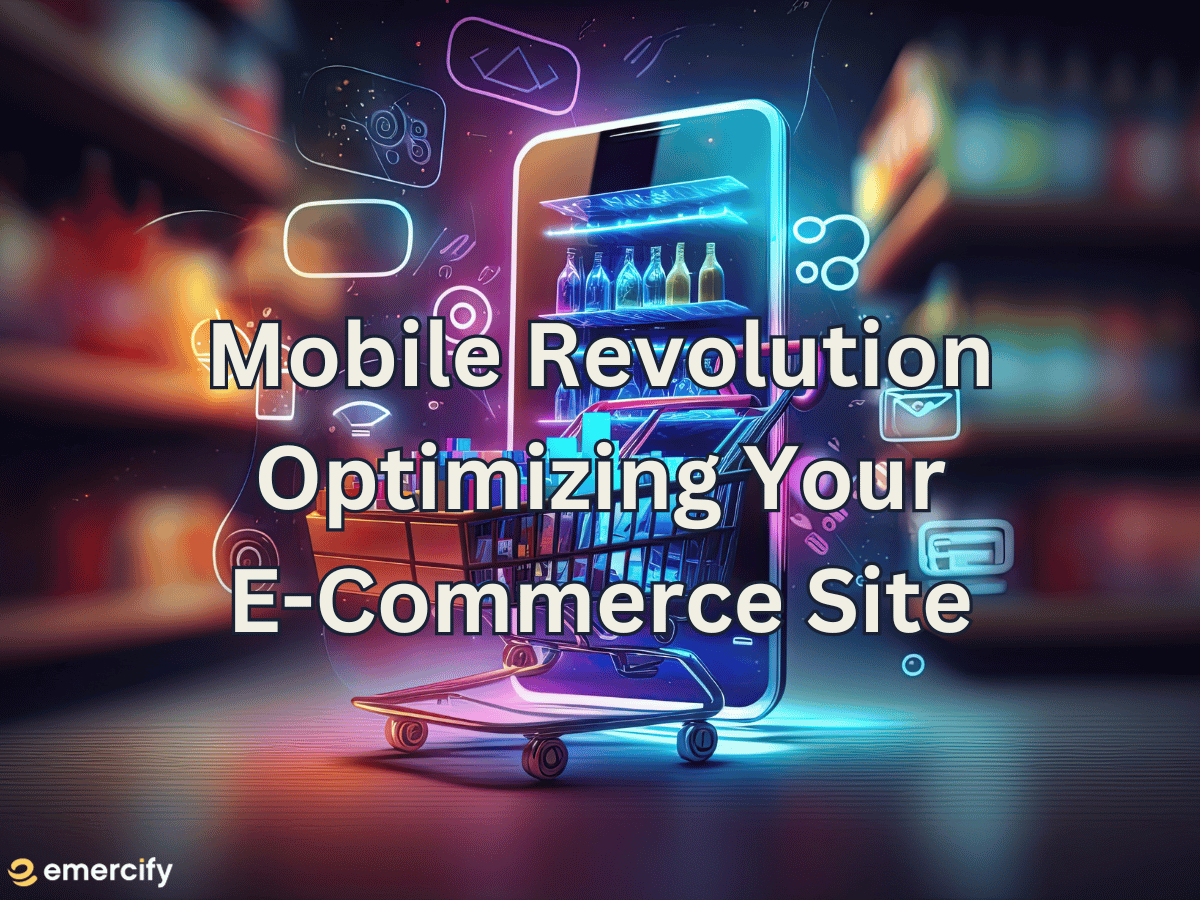Mobile Revolution: Optimizing Your E-Commerce Site for a Seamless Shopping Experience

In the ever-evolving landscape of e-commerce, one trend stands out prominently - the growing influence of mobile devices. There is no question that mobile shopping is reigning supreme in the e-commerce space. As smartphones and tablets become an integral part of our daily lives, businesses are realizing they must adapt to meet the needs of an increasingly mobile-centric audience. In this blog post, we'll explore the rising role of mobile devices in e-commerce and provide actionable tips on how businesses can optimize their online presence for mobile users.
The Mobile Revolution in E-Commerce
Mobile Traffic Dominance
Mobile devices have taken the lead in terms of internet usage, with a significant portion of online traffic originating from smartphones and tablets. According to recent studies, over 60% of e-commerce traffic comes from mobile devices, underlining the necessity for businesses to prioritize mobile optimization. Think of all that traffic and potential! If you are an e-commerce brand, you need to be optimizing your shopping experience for a mobile interface. This will allow you to be not miss out on users who are looking for a smooth and easy mobile shopping experience.
Google's Mobile-First Indexing
Google, the search engine giant, has adopted a mobile-first indexing approach, meaning it primarily uses the mobile version of a website for indexing and ranking. This shift underscores the importance of ensuring that your e-commerce site is mobile-friendly to maintain and improve search engine visibility. Be sure to view and format your website to ensure it is properly optimized for mobile. Google and other search engines are really starting to push the mobile optimization and indexing. Be sure to look at the mobile experience your users are having. Is it good enough? What can be improved?
Optimizing for Mobile Users
Responsive Design
Implement a responsive web design that adapts seamlessly to different screen sizes. This ensures a consistent and user-friendly experience across various devices. A prime example of effective responsive design is the e-commerce giant Amazon. Whether accessed from a desktop or a smartphone, Amazon's interface adjusts seamlessly to provide an optimal shopping experience. Many e-commerce brands are adapting this approach as well. With the adaption of “one-click” and “buy now” options, purchasing has become even easier than before.
Mobile-Friendly Content
Tailor your content for mobile users by using concise product descriptions, clear images, and easily readable fonts. Optimize images for quick loading times without compromising quality. Fashion retailer ASOS excels in this aspect, presenting product images and descriptions in a clean and mobile-friendly format. Amazon is also another great example of how to create mobile-friendly content. Users are able to access a mobile application where you can easily search up items and descriptions. The formatting includes keywords and phrases, and flows effortlessly for the search to work. If you are creating an online store or using a platform that has a mobile-friendly option, also be sure to format your website so it looks just as good on the mobile version as it does on a desktop.
Fast Loading Speeds
Mobile users demand speed. Compress images, leverage browser caching, and minimize HTTP requests to enhance your website's loading speed. Walmart, for instance, has invested in optimizing its mobile site for speed, ensuring a swift and hassle-free shopping experience for users on the go. If you aren’t sure if your website is fully optimized for mobile, consider using a tool like SEMRush or Ubersuggest to crawl your domain and see how your current website is performing. The crawl will show you the loading speeds for both a desktop format and a mobile format, along with suggestions for how quick your site should be loading in either format.
Intuitive Navigation
Simplify navigation by incorporating a user-friendly menu and intuitive navigation buttons. The mobile site of clothing retailer H&M is a shining example, providing a smooth and intuitive browsing experience with easy-to-navigate menus and filters. This is how your users are going to move through your brand’s website. Make sure this is as seamless as possible. Consider using a menu that is simple and has big-enough lettering that can be seen on a mobile device. This is very important because without an effective navigation on your website, users won’t be able to access all that they need or want which can cause you to lose out on traffic and sales. If you are thinking of creating a website for your e-commerce brand, be sure to test what the formatting looks like and if the navigation menu works and makes sense with how you are structuring things. This is one of the most crucial parts of a website. Make sure it doesn’t negatively impact your users’ shopping experience.
Mobile Payment Options
Streamline the checkout process by offering mobile-friendly payment options, such as digital wallets and one-click payments. PayPal and Apple Pay integration are excellent examples of providing convenience to mobile shoppers, reducing friction during the payment process. Since most people are now choosing to have their wallets digitally connected, having an e-commerce website that is integrated with these types of payment options means the shopping experience is even easier. This also makes things a lot more streamlined and automated. Many payment processing platforms receive the funds and can be set up so the fees are automatically deducted and the funds are then transferred to an account of your choice. Easy, breezy, lemon squeezy! Some of these payment platforms also offer cards that connect to your funding account, so any monies you receive through orders and online payments will be automatically loaded onto that card. In some cases, the money is deposited to the card days before a direct deposit into your bank account would have occurred. Definitely look into a payment processing option that is mobile-friendly. It could be what puts you over your competitors!
On-The-Go & In-Demand
The mobile revolution in e-commerce is undeniable, and businesses that prioritize mobile optimization will undoubtedly stay ahead in the competitive landscape. By adopting a responsive design, optimizing content, ensuring fast loading speeds, improving navigation, and integrating mobile payment options, your e-commerce site can cater to the needs of the ever-growing mobile user base. Embrace the mobile revolution, and watch your business thrive in the era of handheld shopping. Make your shopping experience something to remember!
Is your e-commerce website mobile-friendly? Why or why not?





